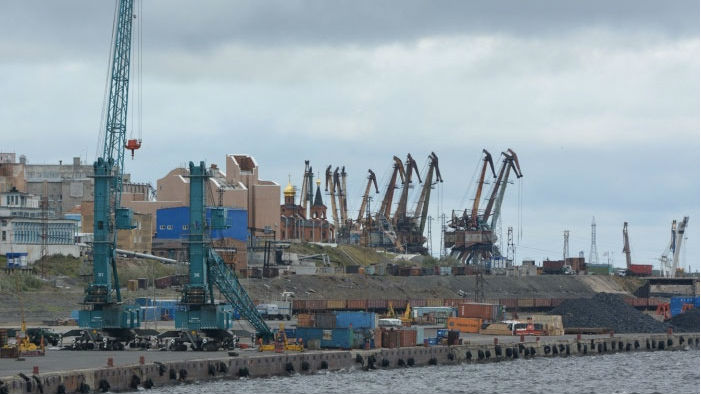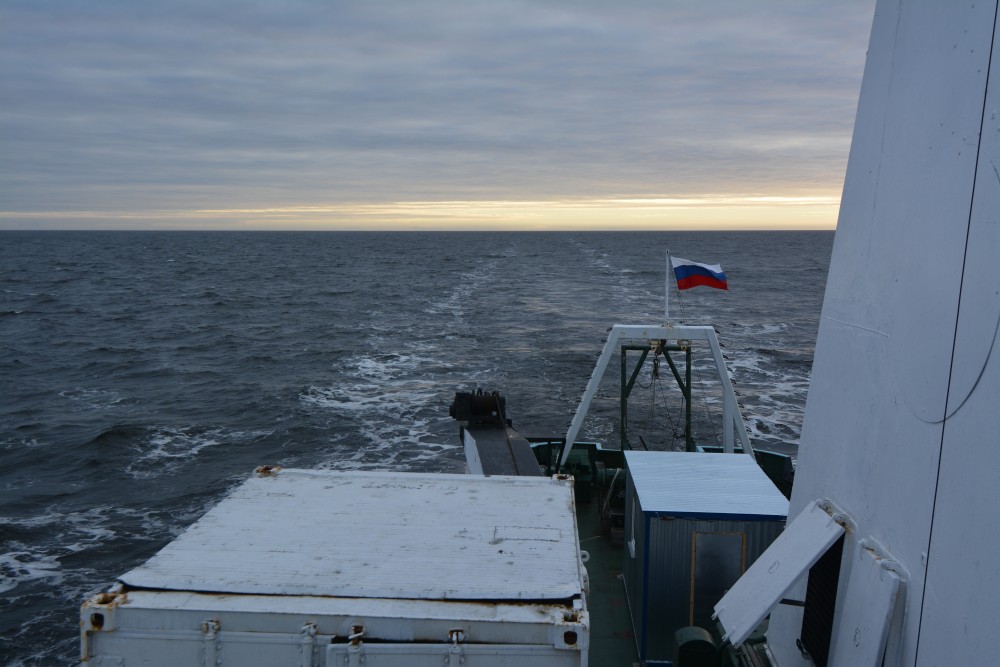Arctic coastal town of Dikson is fastest-warming place in Russia

The town of Dikson and the surrounding Taymyr Peninsula, in Russia’s central Arctic, has the most rapid temperature increase in Russia, as well as an aggravating problem of melting permafrost and nearby sea ice.
The new climate report from Roshydromet, Russia’s state agency on meteorology and environmental monitoring, leaves no doubt about the serious changes now unfolding in the Arctic parts of the country.
According to the document, 2017 was the third warmest year ever on record in the Arctic, and only 0,1 C degrees lower than the record-beating 2011. And the further north, the bigger the temperature increase. On altitudes of 70-85° North, the air was 2,7 C degrees warmer than the annual average since measurements started in 1936. That includes the lion’s share of the country’s Arctic coast, as well as the major archipelagos like Novaya Zemlya, Franz Josef Land and the New Siberian Islands.
On altitudes between 60-70° North, the deviation was 1,8 C degrees, the reports reads.

Warm Kara Sea
According to Roshydromet, the Kara Sea has experienced the most dramatic boost in air temperatures over the last 30 years. Since 1998, the average temperatures in the area have increased by as much as 4,95 C degrees.
That has a serious effect on nature, as well as social and economic conditions, in nearby settlements like Dikson on the Taymyr Peninsula.
The temperature data are based on information collected from the country’s 250 meteorological stations, as well as from buoys in Arctic waters.
The biggest temperature deviations in the entire country in 2017 were found in the Kara Sea and the Chukchi Sea (far-east), reaching their highest numbers in March. The temperatures that month were as much as 13 degrees higher than average, the data shows.

Shrinking sea ice
The high air temperatures is one of the drivers of sea ice melting, and the Arctic ice cover in 2017 shrunk to a minimum of 4,74 million square km. That is far less than the former normal of about 6 million km2 but still significantly more than the record low of 3.37 million km2 in September 2012.
Ice melting has a major effect on the Northern Sea Route, the shipping short-cut between Asia and Europe. According to Roshydromet, the ice coverage of the NSR in the period 1998-2005 shrunk to about 200,000 square kilometres, which is a 7-fold decrease compared with previous years. However, since 2005, the ice coverage on the shipping route has remained more or less the same.
Melting permafrost
The report from Roshydromet also includes alarming data about melting permafrost. According to the researchers, all measuring points in the country’s European parts of the Arctic in 2017 saw a shrinking of the permafrost layer by about 10 cm. The biggest melting was observed at the measuring point in the Pechora River delta, where the decrease was as much as 33 cm.
There is also a major reduction of permafrost in the western parts of Siberia. In the area of Nadym, a key oil-producing town, the researchers found the permafrost layer shrunk by as much as 38 cm, and five measuring points in the Yamal Peninsula showed a decrease of 12 to 26 cm.
In Norilsk, the industrial city with a population of about 175,000, the measurements showed that the local permafrost in the late summer of 2017 had decreased by 22 percent compared to the previous year.
The rate of permafrost melting is far less serious in the northeastern parts of Siberia and, in some places, researchers even found the permafrost layer had grown.

Can lead to serious accidents
Consequences for the worst-affected areas can be dramatic, the state agency on meteorology and environmental monitoring warns (in Russian). All kinds of infrastructure, including roads, pipelines, buildings and industrial plants can stop being functional as the ground’s ability to carry their weight fades and a string of destructive processes set in.
As a result, infrastructure can be partly or fully destroyed, and the socioeconomic and environmental consequences can be numerous and unpleasant. That includes oil spills and pollution with dangerous chemical, biological and radioactive materials, the researchers say.
Among the most vulnerable structures are buildings and coastal installations along the shores of the Arctic ocean, they add.
Related links from around the North:
Canada: Thawing permafrost in Canada’s Northwest Territories releasing acid that’s breaking down minerals: study, CBC News
Finland: Finnish researcher’s animation shows climate warming at startling speed, Yle News
Greenland: Greenland joins push to ban heavy fuel oil in the Arctic, Radio-Canada International
Norway: Arctic Europe’s July records melted under extreme temperatures, The Independent Barents Observer
Russia: Buildings in Arctic Russia could collapse within decades says study, The Independent Barents Observer
Sweden: Melting ice brings down Sweden’s highest mountain peak, Radio Sweden
United States: Permafrost thaw prompts emergency orders from Alaska regulators over pipelines concerns, Alaska Dispatch News



